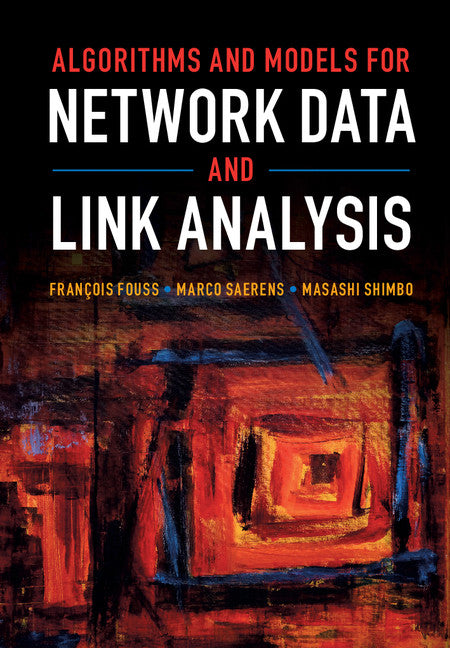Freshly Printed - allow 4 days lead
Couldn't load pickup availability
Algorithms and Models for Network Data and Link Analysis
A hands-on, entry-level guide to algorithms for extracting information about social and economic behavior from network data.
François Fouss (Author), Marco Saerens (Author), Masashi Shimbo (Author)
9781107125773, Cambridge University Press
Hardback, published 12 July 2016
543 pages, 14 b/w illus. 7 tables
26.1 x 18.4 x 3.3 cm, 1.15 kg
'This is a reader-friendly up-to-date book covering all the major topics in static network data analysis. It both exposes the reader to the most advanced ideas in the field and provides the researcher with a toolbox of techniques to explore various structures: models involving the graph Laplacian, regularization methods, and Markov interpretations feature in this toolbox, among others.' Pavel Chebotarev, Institute of Control Sciences, Russian Academy of Sciences
Network data are produced automatically by everyday interactions - social networks, power grids, and links between data sets are a few examples. Such data capture social and economic behavior in a form that can be analyzed using powerful computational tools. This book is a guide to both basic and advanced techniques and algorithms for extracting useful information from network data. The content is organized around 'tasks', grouping the algorithms needed to gather specific types of information and thus answer specific types of questions. Examples include similarity between nodes in a network, prestige or centrality of individual nodes, and dense regions or communities in a network. Algorithms are derived in detail and summarized in pseudo-code. The book is intended primarily for computer scientists, engineers, statisticians and physicists, but it is also accessible to network scientists based in the social sciences. MATLAB®/Octave code illustrating some of the algorithms will be available at: http://www.cambridge.org/9781107125773.
1. Preliminaries and notation
2. Similarity/proximity measures between nodes
3. Families of dissimilarity between nodes
4. Centrality measures on nodes and edges
5. Identifying prestigious nodes
6. Labeling nodes: within-network classification
7. Clustering nodes
8. Finding dense regions
9. Bipartite graph analysis
10. Graph embedding.
Subject Areas: Computer science [UY], Data mining [UNF], Databases [UN]


